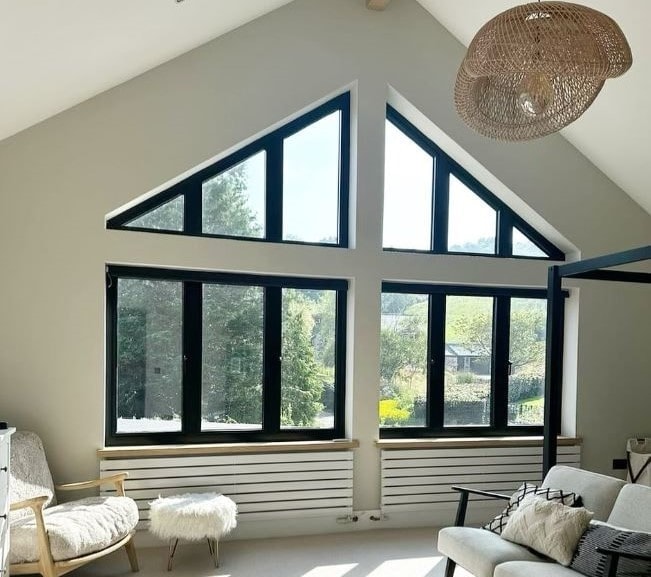How Thick is Double Glazing?
Double glazing thickness is a crucial factor that many homeowners overlook when considering window replacements or upgrades. However, the dimensions of your double-glazed units can significantly impact your home’s thermal efficiency. Wondering how thick is double glazing? This guide explores everything you need to know about double glazing thickness.
Standard Double Glazing Units

The typical thickness of double glazing units in the UK market generally falls between 24mm and 28mm. This standard measurement has become the industry norm for most modern window installations, particularly in uPVC and aluminium framing systems. The 28mm configuration typically consists of two 4mm glass panes separated by a 20mm spacer bar, creating an insulating gap.
Modern window manufacturers have optimised their production around these standard measurements, making them the most cost-effective and readily available option for most homeowners. The 28mm thickness provides an excellent balance between insulation performance and practical installation requirements, fitting perfectly into contemporary window frames without requiring specialised adjustments.
It’s worth noting that while 28mm is considered the industry standard, some window systems may accommodate slightly thicker or thinner units depending on their design, e.g. if they are a tilt and turn.
Impact of Double Glazing Thickness on Energy Efficiency
The thickness of double glazing directly influences its energy efficiency performance, primarily through the width of the gap between glass panes. This space, typically filled with an inert gas like argon, provides the primary thermal barrier that prevents heat transfer through the window.
The glass thickness itself also plays a role in energy efficiency, though to a lesser extent than the gap width. Thicker glass panes (6mm rather than 4mm, for example) provide slightly better insulation and significantly improved acoustic performance. However, the increased weight and cost must be balanced against these benefits when making specification decisions.
Modern double glazing units often incorporate low-emissivity (low-E) coatings that further enhance energy efficiency regardless of thickness. These microscopic metal oxide layers reflect heat back into the building while still allowing sunlight to pass through, improving thermal performance without increasing physical dimensions. When combined with optimal gap width and gas filling, these coatings can help even slimmer units achieve impressive energy ratings.
Triple Glazing
You may opt for triple glazing over double glazing because it offers superior thermal efficiency, helping to keep your home warmer in winter and cooler in summer.
With three panes of glass separated by insulating gas layers, triple glazing significantly reduces heat loss compared to double glazing, which can lower energy bills and improve overall comfort. Additionally, triple glazing can increase security due to the extra layer of glass. Although it typically costs more upfront, the long-term benefits in energy savings, comfort, and property value can make it a worthwhile investment.
Looking for a New Glass Supplier?
At UKO Glass, we deliver glazing solutions that meet and exceed modern standards.
As an A-rated glass supplier, we’re trusted nationwide for our reliability and commitment to quality. Want to find out more? Email us on theteam@ukoglass.co.uk. We’re always happy to help!
